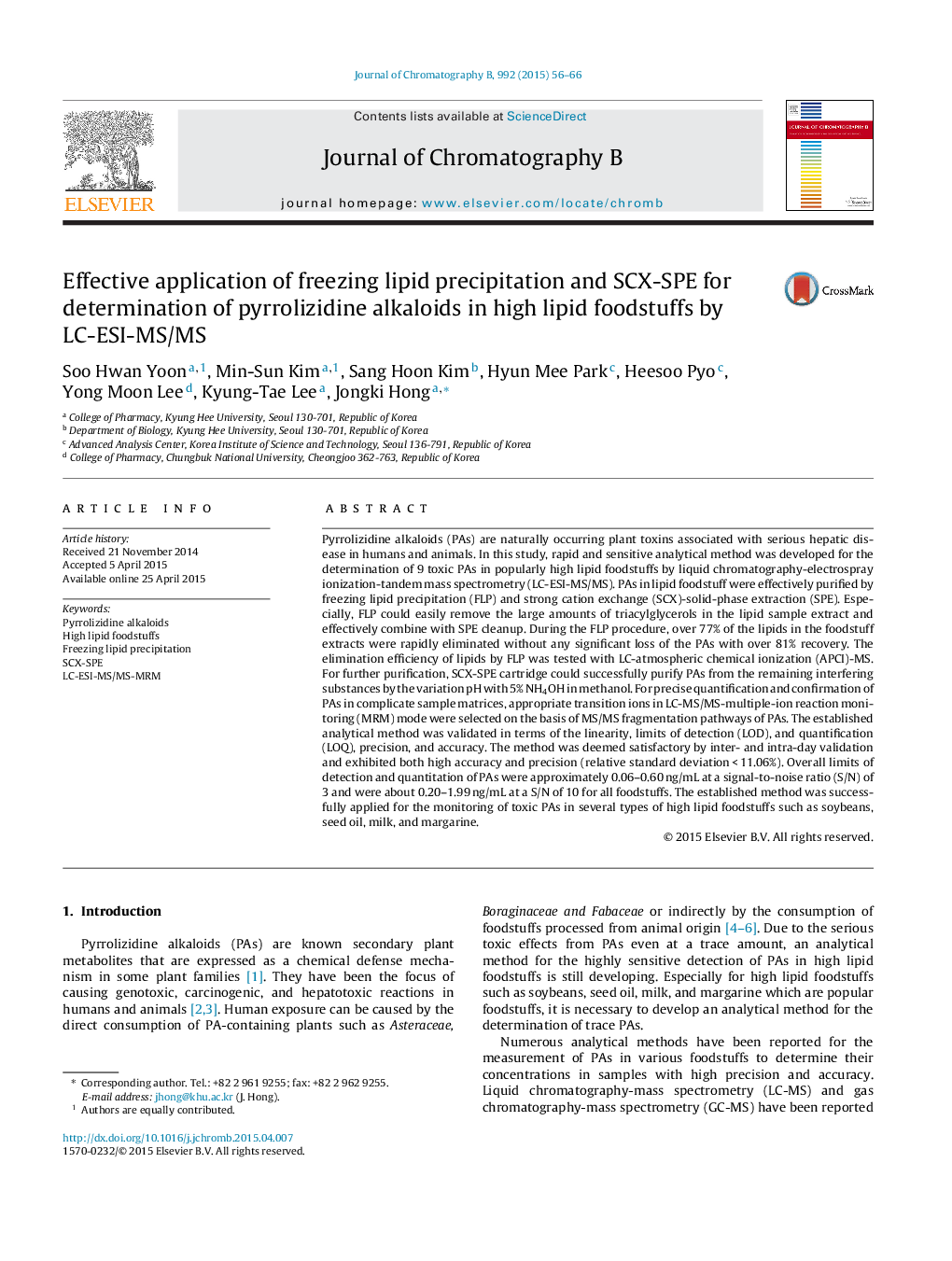| Article ID | Journal | Published Year | Pages | File Type |
|---|---|---|---|---|
| 1212130 | Journal of Chromatography B | 2015 | 11 Pages |
•Developed an analytical method for determination of trace PAs in high lipid foodstuffs.•Provided an efficient cleanup of lipids by freezing lipid filtration and SCX-SPE.•Examined the removal efficiency of lipids by LC-APCI-MS.•Selected MRM transition ions for improving the sensitivity and selectivity for PAs based on MS/MS fragmentations.•Provided the concentration levels of PAs in soybean and seed oil samples.
Pyrrolizidine alkaloids (PAs) are naturally occurring plant toxins associated with serious hepatic disease in humans and animals. In this study, rapid and sensitive analytical method was developed for the determination of 9 toxic PAs in popularly high lipid foodstuffs by liquid chromatography-electrospray ionization-tandem mass spectrometry (LC-ESI-MS/MS). PAs in lipid foodstuff were effectively purified by freezing lipid precipitation (FLP) and strong cation exchange (SCX)-solid-phase extraction (SPE). Especially, FLP could easily remove the large amounts of triacylglycerols in the lipid sample extract and effectively combine with SPE cleanup. During the FLP procedure, over 77% of the lipids in the foodstuff extracts were rapidly eliminated without any significant loss of the PAs with over 81% recovery. The elimination efficiency of lipids by FLP was tested with LC-atmospheric chemical ionization (APCI)-MS. For further purification, SCX-SPE cartridge could successfully purify PAs from the remaining interfering substances by the variation pH with 5% NH4OH in methanol. For precise quantification and confirmation of PAs in complicate sample matrices, appropriate transition ions in LC-MS/MS-multiple-ion reaction monitoring (MRM) mode were selected on the basis of MS/MS fragmentation pathways of PAs. The established analytical method was validated in terms of the linearity, limits of detection (LOD), and quantification (LOQ), precision, and accuracy. The method was deemed satisfactory by inter- and intra-day validation and exhibited both high accuracy and precision (relative standard deviation < 11.06%). Overall limits of detection and quantitation of PAs were approximately 0.06–0.60 ng/mL at a signal-to-noise ratio (S/N) of 3 and were about 0.20–1.99 ng/mL at a S/N of 10 for all foodstuffs. The established method was successfully applied for the monitoring of toxic PAs in several types of high lipid foodstuffs such as soybeans, seed oil, milk, and margarine.
